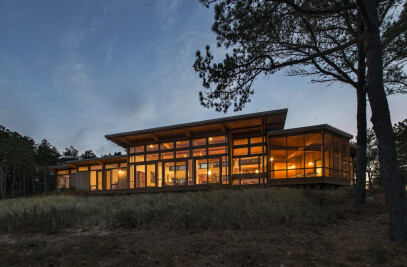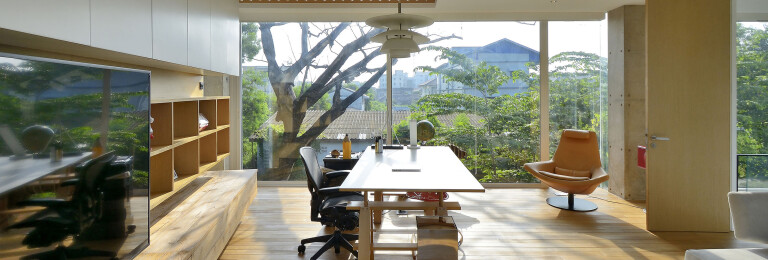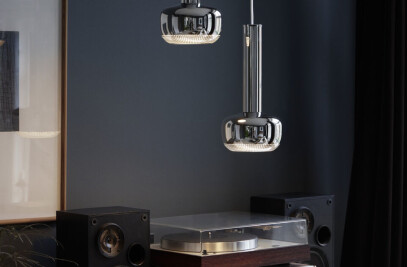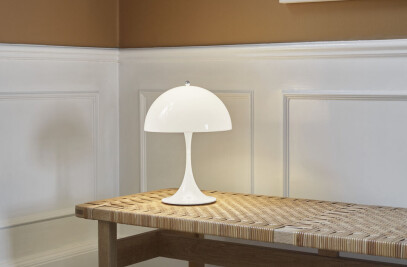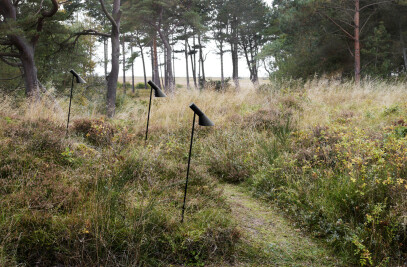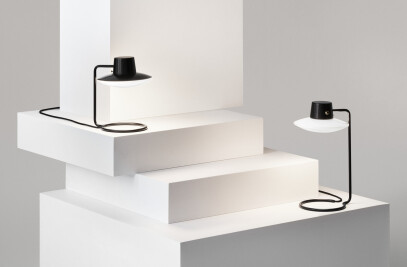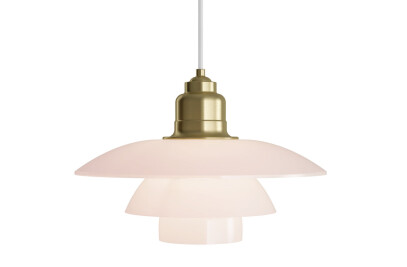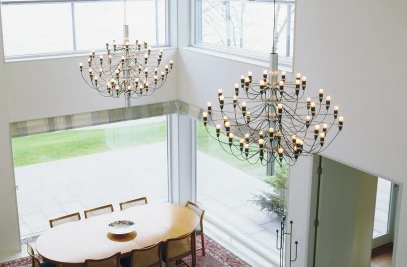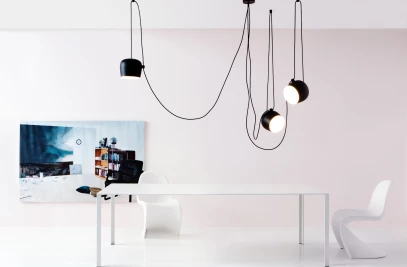Throughout his life, PH sought to create glare-free light, direct light where it was most needed, and create soft shadows, using incandescent bulbs as a light source. The four-shade system was launched in 1931 to create a fixture which could be mounted high up and serve as an alternative to the commonly used chandeliers. The PH four-shade light was designed to increase the amount of light emitted horizontally to provide greater illumination of walls and shelves than was possible using standard three-shade lights. It was removed from the Louis Poulsen standard range in the 40s, but was redesigned in 1979 by two Danish architects – Sophus Frandsen and Ebbe Christensen – for the Charlottenborg exhibition building in Copenhagen, although in a larger size: PH 6½/6. To resolve the never ending glare problem, the two architects decided to add a small blue shade to the design. They also added a new surface with a more matte, white painted shade, to achieve a more even, comfortable light – ideal for museums and exhibition rooms or as general lighting in rooms with high ceilings. A smaller version, the 5/4½, was created for the Aarhus Concert Hall in 1984.
The trumpet-shaped top shade on the fixture provides illumination of the area above the three shades, which primarily direct the light downwards. A base reflector and a blue glare ring protect against glare from all angles. The strongest light is directly under the fixture. The shades have a matt white painted finish to ensure very comfortable lighting.



















